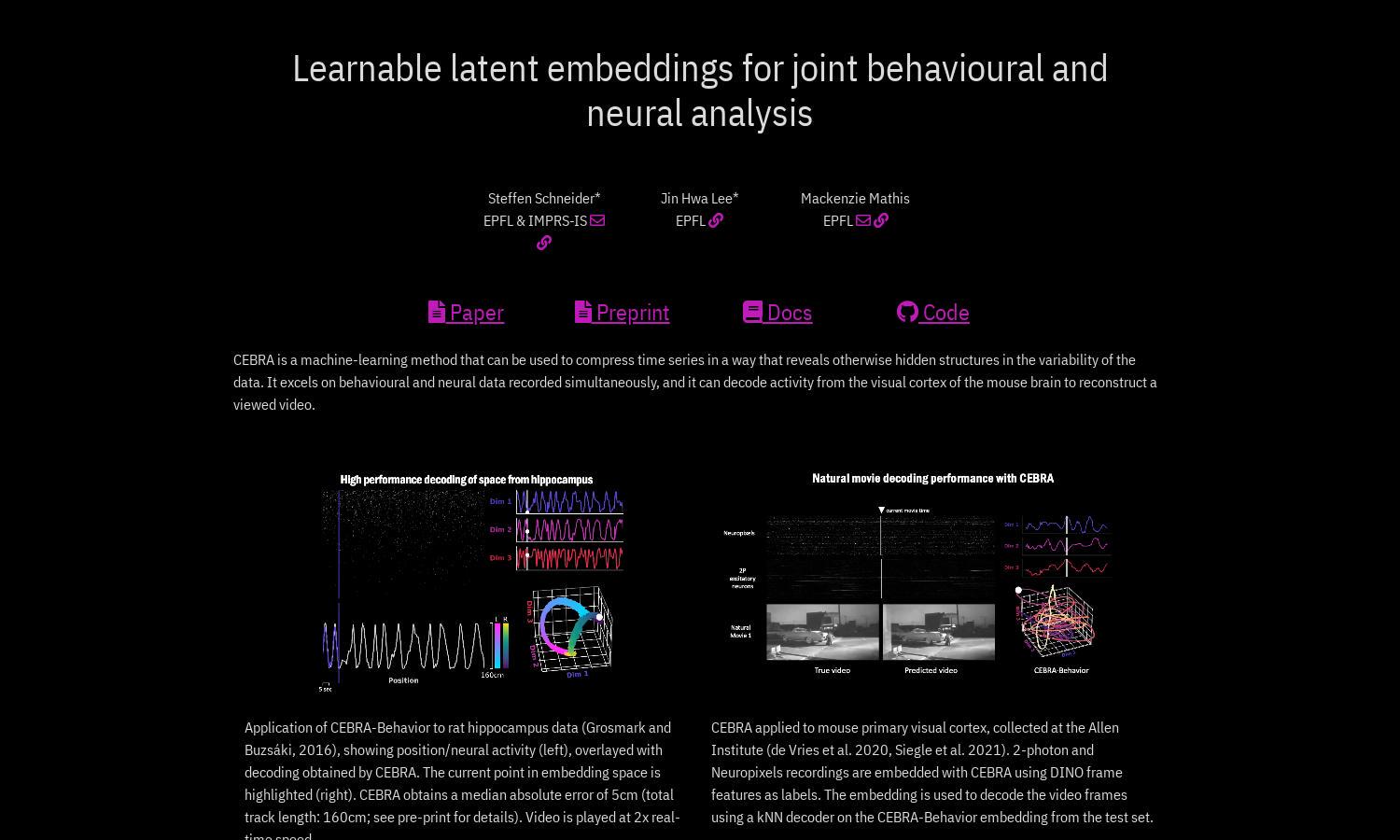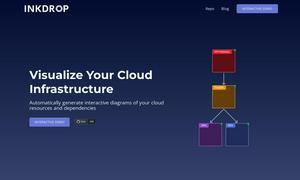CEBRA

About CEBRA
CEBRA is a state-of-the-art machine learning tool for neuroscience research, focused on analyzing behavioral and neural data concurrently. By creating learnable latent embeddings, CEBRA supports hypothesis-driven insights and discovery, helping researchers decode activity in visual cortex and understand adaptive behaviors effectively.
CEBRA offers an open-source implementation available on GitHub, allowing users to access the software for free. Researchers benefit from the tool’s capabilities in processing behavioral and neural data, enhancing their research methodologies without significant financial barriers, promoting collaboration within the neuroscience community.
CEBRA features an intuitive, user-friendly interface designed to streamline data analysis. Its layout facilitates easy navigation through datasets and outputs, ensuring researchers can efficiently utilize its advanced functionalities. The design fosters a seamless experience, allowing scientists to focus on deriving meaningful insights from their data.
How CEBRA works
Users initiate their experience with CEBRA by importing their neural and behavioral datasets into the platform. The tool employs advanced machine learning techniques to create latent embeddings that accurately reflect the underlying data structures. Researchers can easily navigate through the intuitive interface, utilizing CEBRA to decode neural activity related to behavioral tasks, facilitating both hypothesis-driven and discovery-inspired analysis.
Key Features for CEBRA
Joint Behavioral and Neural Data Analysis
CEBRA's unique approach to joint behavioral and neural data analysis enables researchers to uncover hidden patterns in complex datasets. By utilizing learnable latent embeddings, CEBRA assists in decoding neural activity, providing insights into adaptive behavior dynamics and fostering advancements in neuroscience research.
High-Performance Latent Space Generation
A standout feature of CEBRA is its ability to generate high-performance latent spaces from complex datasets. This function allows researchers to visualize and interpret the intricate relationships between neural and behavioral variables, enhancing their understanding and ability to analyze data effectively in neuroscience studies.
Rapid Decoding of Visual Cortex Activity
CEBRA excels in the rapid decoding of visual cortex activity from neural recordings. This innovative feature empowers researchers to reconstruct visual stimuli experienced by subjects, significantly aiding in the exploration of sensory processing and neural representation associated with visual tasks in behavioral neuroscience.
You may also like:








